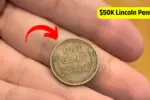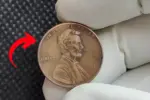In the world of coin collecting, it’s not unusual for a small, seemingly insignificant detail to add astronomical value to a piece of currency. One such fascinating tale comes from the United States’ Bicentennial Quarter a coin that, under certain rare circumstances, could potentially fetch an astonishing $20 million. This eye-popping valuation turns what might seem like ordinary pocket change into a life-changing jackpot.
But what is this mysterious Bicentennial Quarter error, and why is it worth so much? Let’s explore the history, rarity, and specific traits that make this coin a must-have for collectors and enthusiasts alike.
The History of the Bicentennial Quarter
The Bicentennial Quarter was introduced in 1975 and 1976 to commemorate the 200th anniversary of the United States’ independence. Unlike standard Washington quarters, these coins featured a unique reverse design created by Jack L. Ahr. The iconic design includes a colonial drummer and a torch surrounded by 13 stars, symbolizing the original colonies. The obverse retained the familiar profile of George Washington but with a dual date inscription of “1776-1976.”
The Bicentennial coins were produced in large quantities more than 1.6 billion quarters were struck between the Philadelphia and Denver mints, ensuring that almost everyone in the United States had the chance to own a piece of history. Yet, among these billions, a tiny fraction of coins contains errors that transform their worth from 25 cents to millions of dollars.
What Makes This Error So Special?
Errors on coins occur when something goes awry during the minting process. They can include misalignments, double strikes, or the use of incorrect planchets (metal discs used to create coins). While most errors are minor and don’t significantly impact a coin’s value, some are so rare and unusual that they become treasures in the eyes of collectors.
The specific error tied to the Bicentennial Quarter is shrouded in mystery, adding to its allure. Reports suggest that certain Bicentennial Quarters were struck on an experimental planchet—possibly one containing a mix of silver and other metals. This would make the coin significantly rarer than standard copper-nickel clad versions.
Even more tantalizing is the possibility that some of these quarters were struck in error at a higher-than-standard relief, giving them sharper details and a unique appearance. When combined with the coin’s historical significance and widespread appeal, these errors create a perfect storm for astronomical valuations.
How Rare Is the Error?
The rarity of an error is directly proportional to its value. In the case of the Bicentennial Quarter, only a handful of error coins are believed to exist though the exact number remains unknown. This scarcity is what drives the potential value as high as $20 million.
To put this in perspective, even coins with less significant errors can command thousands of dollars at auction. For example, a 1970-S quarter struck on a foreign planchet sold for over $35,000 in a recent auction. When you consider the Bicentennial Quarter’s unique design and historical significance, it’s no wonder that collectors are willing to pay extraordinary sums for an error coin.
How to Identify a Valuable Bicentennial Quarter
If you’re hoping to find one of these treasure coins, you’ll need a keen eye and a bit of luck. Here are some key traits to look for:
- Unique Metal Composition: Use a magnet or have the coin tested to determine its metal content. An experimental planchet will likely have a different composition from standard copper-nickel quarters.
- High Relief Details: Inspect the coin for sharper or more pronounced details compared to a typical Bicentennial Quarter. A higher relief may indicate an error.
- Weight Variations: Coins struck on experimental planchets may have a slightly different weight. A precision scale can help you identify discrepancies.
- Mint Marks: Check for unusual mint marks or other anomalies that could signify an error. Bicentennial Quarters were produced at the Philadelphia (no mint mark) and Denver (D) mints, with a smaller number struck in San Francisco (S) for proof sets.
- Professional Certification: If you suspect you have a valuable coin, consider having it evaluated by a professional grading service such as the Professional Coin Grading Service (PCGS) or Numismatic Guaranty Corporation (NGC). These experts can authenticate the coin and determine its grade, significantly impacting its value.
The Role of Auctions and Collectors
The numismatic world is filled with passionate collectors who are willing to pay top dollar for rare coins. Auctions provide a platform for these enthusiasts to compete for ownership, often driving prices to extraordinary heights. In the case of the Bicentennial Quarter error, it’s likely that such a coin would attract global attention, with bidders vying for a chance to own this piece of American history.
The potential $20 million valuation isn’t just a theoretical figure it’s a reflection of the coin’s rarity, historical significance, and the high demand from collectors. As more people become aware of this unique error, interest in the Bicentennial Quarter is only expected to grow.
The Impact on Modern Coin Collecting
The story of the Bicentennial Quarter error highlights the excitement and unpredictability of coin collecting. It serves as a reminder that treasures can be found in unexpected places, including pocket change and forgotten collections. For hobbyists and investors alike, coins like this represent not only a financial opportunity but also a connection to history and artistry.
The allure of discovering a rare coin is one of the driving forces behind the popularity of numismatics. Whether you’re a seasoned collector or just getting started, stories like this inspire a sense of wonder and curiosity about the coins we often take for granted.
Final Thoughts
The Bicentennial Quarter error is a fascinating example of how a small, overlooked detail can transform an ordinary object into something extraordinary. With a potential value of $20 million, this rare coin has captured the imagination of collectors and enthusiasts around the world.
If you’re lucky enough to find one of these elusive treasures, you could be holding a piece of history and a fortune in your hands. But even if you don’t strike gold, the story of the Bicentennial Quarter serves as a reminder of the incredible stories hidden in the everyday objects around us.
So, the next time you’re sorting through spare change, take a closer look. You might just uncover a hidden treasure that changes your life forever.
FAQs
1. What makes the Bicentennial Quarter error so valuable?
The Bicentennial Quarter error is valuable due to its rare composition, potential higher relief, and historical significance, with some quarters struck on experimental planchets that could include silver or other metals.
2. How can I identify a valuable Bicentennial Quarter?
Look for a unique metal composition, high relief details, weight variations, and unusual mint marks. Professional certification from a grading service like PCGS or NGC can help authenticate the coin.
3. How rare is the Bicentennial Quarter error?
Only a handful of these error coins are believed to exist, making them extremely rare and valuable.
4. What role do auctions play in the value of these coins?
Auctions are a major platform for collectors to bid on rare coins, and the competition often drives prices to extraordinary levels, especially for highly sought-after pieces like the Bicentennial Quarter error.
5. What is the potential value of a rare Bicentennial Quarter error?
The potential value of a rare Bicentennial Quarter error could be as high as $20 million, driven by its rarity, historical significance, and high demand from collectors.



